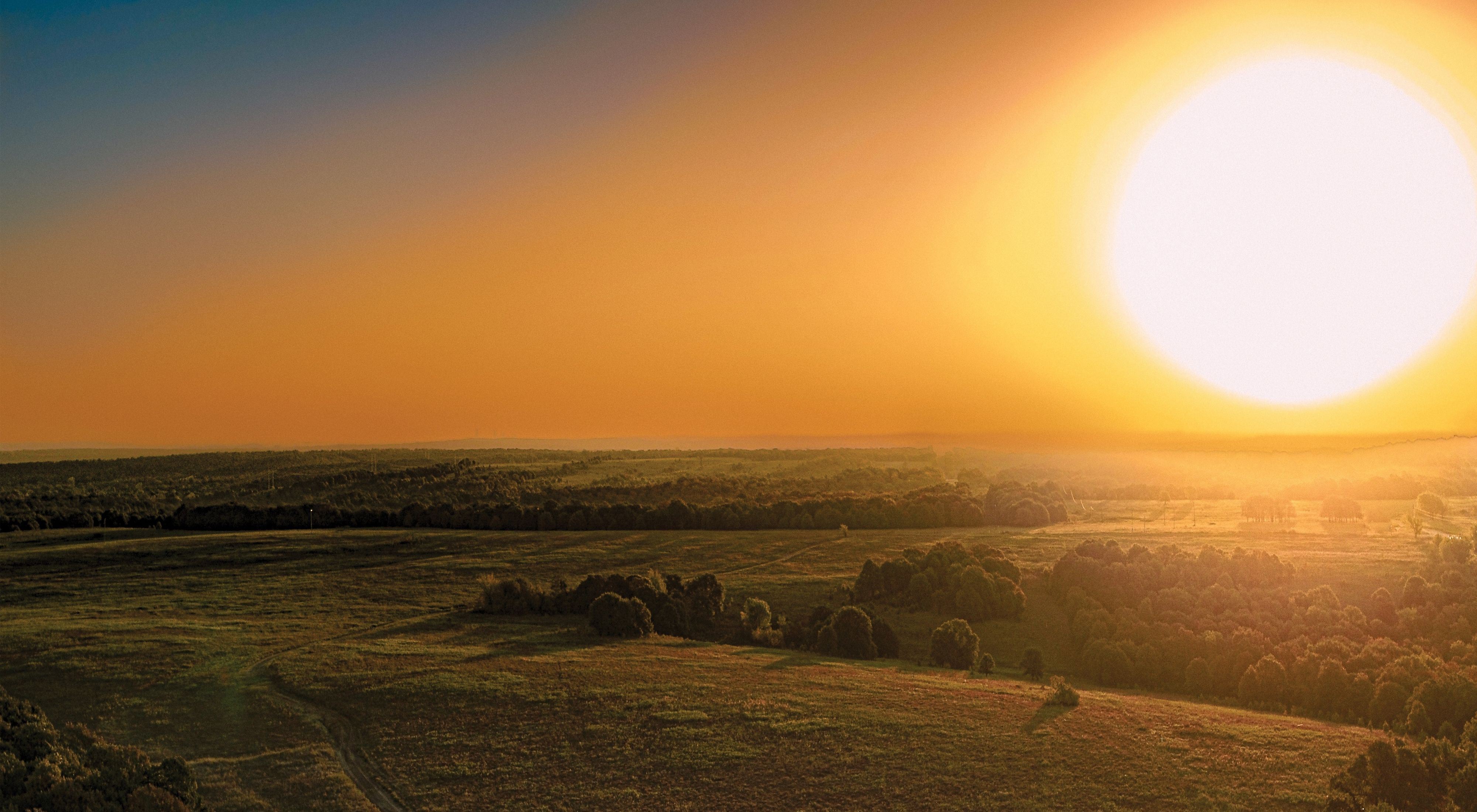Making an Impact: 2023 in Review
Explore the year's conservation successes with state director Mike Fuhr

Friends,
The Nature Conservancy in Oklahoma has been built upon a firm foundation of grassroots conservation. Local businesspeople, entrepreneurs, companies, ranchers, landowners and other leaders have given their influence, time and money in support of conservation. I am pleased to announce that through the generous donation of Andie and Bob Jackson, we launched the Pearl Jackson Crosstimbers Preserve in 2023. Named in honor of Bob’s grandmother, this preserve is a beautiful cross-section of the crosstimbers ecoregion with pockets of open prairie. While we get started stewarding the land, we are consulting with partners, local landowners and leaders to set a vision for public access in the years to come. We look forward to welcoming guests once everything is in place. Although Mr. Jackson unfortunately passed in February of 2023, the legacy of his family will live on.
In addition to Bob’s passing, we sadly lost two more conservation visionaries who played a pivotal role in establishing TNC in Oklahoma. Simply put, without the hard work and dedication of Joseph H. Williams and Jenk Jones, Jr., conservation in Oklahoma wouldn’t be what it is.
Joseph H. Williams, a dedicated conservationist and lifelong friend of the Conservancy, passed away on April 27, 2023, leaving an indelible mark on conservation efforts in Oklahoma and beyond. He played a pivotal role in establishing the Oklahoma chapter and served on TNC's National Board of Governors. Most notably, he spearheaded the successful national fundraising campaign that led to the acquisition of the historic Barnard Ranch—which became the Joseph H. Williams Tallgrass Prairie Preserve in 1989. You can find my tribute to Joe and his legacy here.
We also said goodbye to Jenk Jones, a longtime supporter of TNC and Board of Trustees member. Before joining the board, Jenk volunteered at the Tallgrass Prairie Preserve, sharing its story and guiding visitors to witness the bison herd. His unique approach, blending his career as a journalist and storyteller, left a lasting impact on the preserve's legacy. Jenk shared his passion for conservation as a way to excite old and young alike and will be dearly missed.
These visionaries established an inspirational foundation of conservation in Oklahoma. I am proud to share we are building upon their legacies as TNC plans to conserve 210,000 additional acres of tallgrass prairie in Oklahoma and Kansas over the next seven years as a part of our Flint Hills Initiative. Without their leadership, we would have never conceived such an aspirational goal.
- Mike Fuhr, State Director
Oklahoma at a Glance
-
120,976
Total acres that we have protected across our great state.
-
85,313
Acres owned & managed by TNC
-
10,993
Acres of conservation easements
-
7,910
Acres of Prescribed Fire in 2022
-
8
Ecoregions where we work
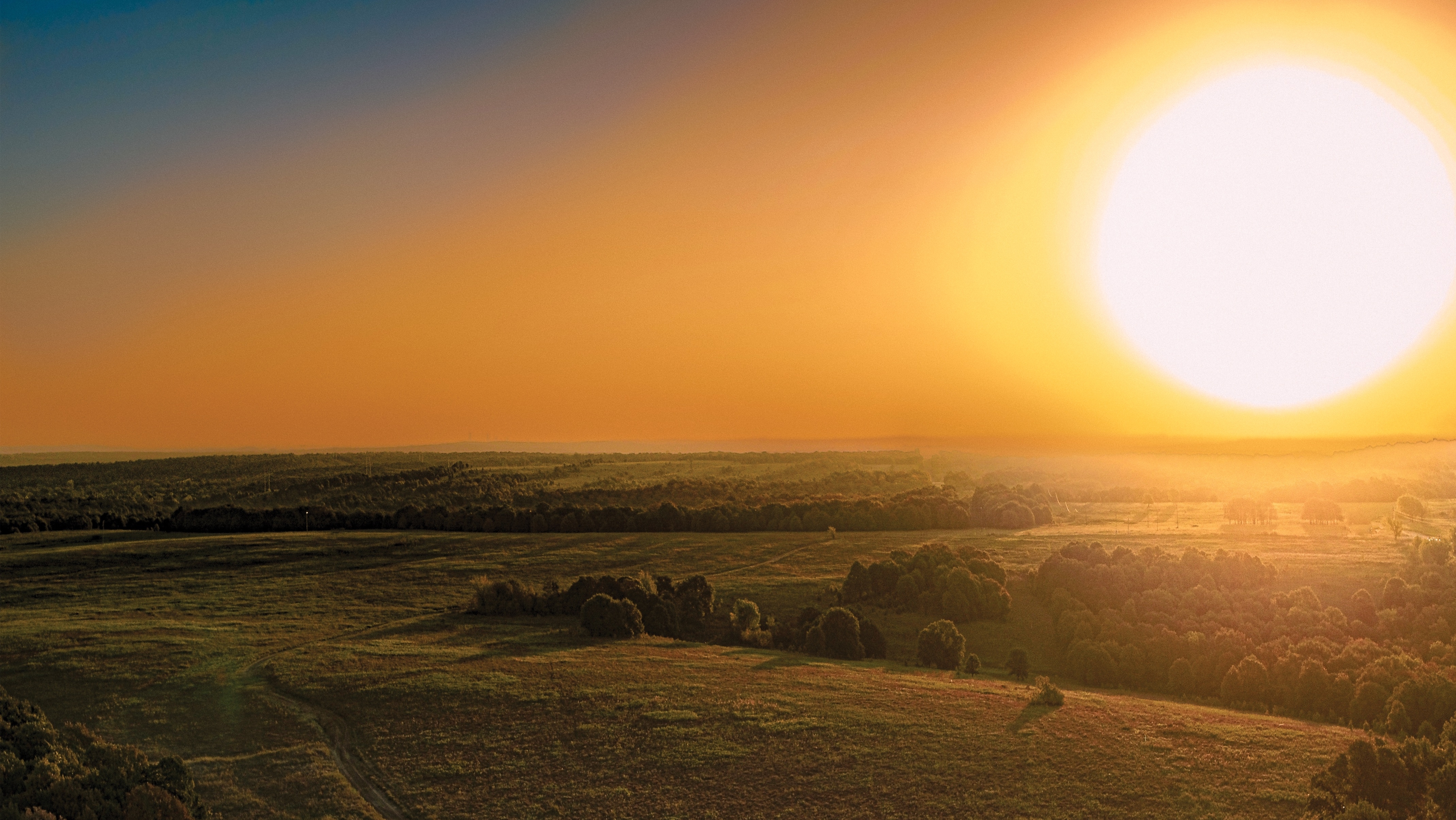
Introducing The Pearl Jackson Cross Timbers Preserve: The Vision of Andie and Bob Jackson
In the 1980s, Bub Jackson became the owner of his grandparents’ land nestled in the gentle hills of Creek County, Oklahoma. Although he lived in St. Louis, where he practiced law, he decided to continue operating the ranch. As he became increasingly involved in managing the ranch and his love grew stronger, he was distressed to think that it might be developed, saying, “I don’t want anyone to pave it over.” Ultimately, Bob made the decision to donate the land to TNC.
“Actions speak louder than words,” says Mike Fuhr, state director. “The Jacksons’ donation affirms their support of conservation in Oklahoma. Their generosity forgoes personal gain and will leave an enduring mark on our state. TNC aims to honor their vision by creating a place for people to connect with the natural world. Plus, a preserve of this magnitude promises ongoing ecological benefits for nature and people—enhancing water and air quality, fighting climate change and safeguarding biodiversity.”
Named after Bob’s grandmother, the Pearl Jackson Crosstimbers Preserve is an ideal specimen of the crosstimbers ecoregion. It features open tallgrass prairie and woodlands of post and blackjack oak—some of which are 200 to 300 years old. The Jacksons have stewarded the property exceptionally; implementing prescribed fire annually since the 1970s. Consequently, the preserve is in outstanding ecological condition, rich with plant and animal life. Seldom-seen bobwhite quail and bobcats, as well as whitetail deer, turkey, songbirds and more, are just a few examples of the diverse animal population of the preserve.
Located near Sapulpa, and just 25 minutes from midtown Tulsa, the Pearl Jackson Crosstimbers Preserve, once open, will provide a new gateway for the public to connect with nature while conserving its ecological significance. Collaborative efforts are underway with businesses, agencies, Tribal partners and ranchers to equitably plan for on-site conservation management, outreach and educational opportunities.
Before the preserve can welcome visitors, the staff must lay the groundwork. “Fences must be improved, roads need to be repaired, and headquarters and facilities must be established. We need to complete a comprehensive biological survey and so much more,” emphasizes Katie Gillies, director of conservation. “But it’s a privilege and a humbling responsibility to be a part of this project. Given the preserve’s exceptional outstanding condition, I’m motivated to get prescribed fire on the ground as soon as possible to maintain the health of the preserve.”
Representing a new chapter for TNC in Oklahoma and a testament to community-driven conservation, the Pearl Jackson Crosstimbers Preserve transcends its physical boundaries. The Jacksons’ incredible generosity and vision, presents the opportunity of a lifetime to create a world-class preserve in the heart of Oklahoma’s green country.
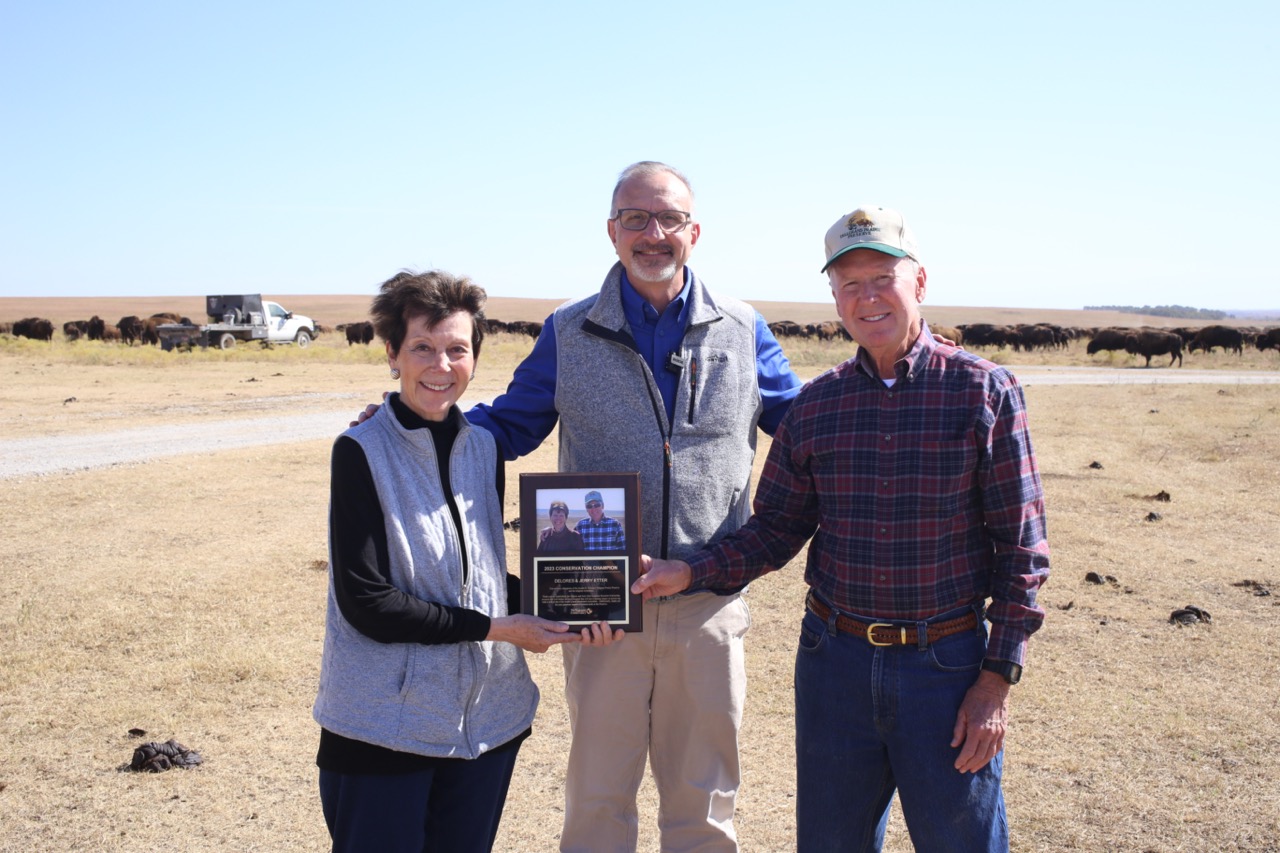
Delores & Jerry Etter: Conservation Champions
Delores and Jerry Etter have shown unwavering dedication to the Joseph H. Williams Tallgrass Prairie Preserve. Over the years, their generous contributions have financed numerous projects directly benefiting the preserve and have provided valuable research opportunities for graduate students.
The Etters first fell in love with the prairie while on a tour with Harvey Payne as a part of their 50th high school reunion. Since then, they have consistently supported the myriad conservation needs of the preserve. For example, in just the last three years, they have directly contributed to the purchase of a small land inholding, fencing and critical pond cleanup which helps the preserve deal with drought.
In addition to their financial support of the preserve, they established the Delores and Jerry Etter Graduate Research Scholarship Fund at the Tulsa Community Foundation. This scholarship provides essential financial assistance to graduate-level research related to the tallgrass prairie ecosystem. The program provides up to five $10,000 scholarships for one year of funding. The Tallgrass Prairie Preserve has long been an excellent area of research of the ecosystem, but this scholarship advances the much-needed research and conservation of the remainder of one of the world’s most vulnerable ecosystems. The Etters have certainly gone above and beyond being major donors—true champions of the prairie. Through their active support of the preserve and dedication to ongoing research, they are strong ambassadors of meaningful conservation and TNC’s mission.
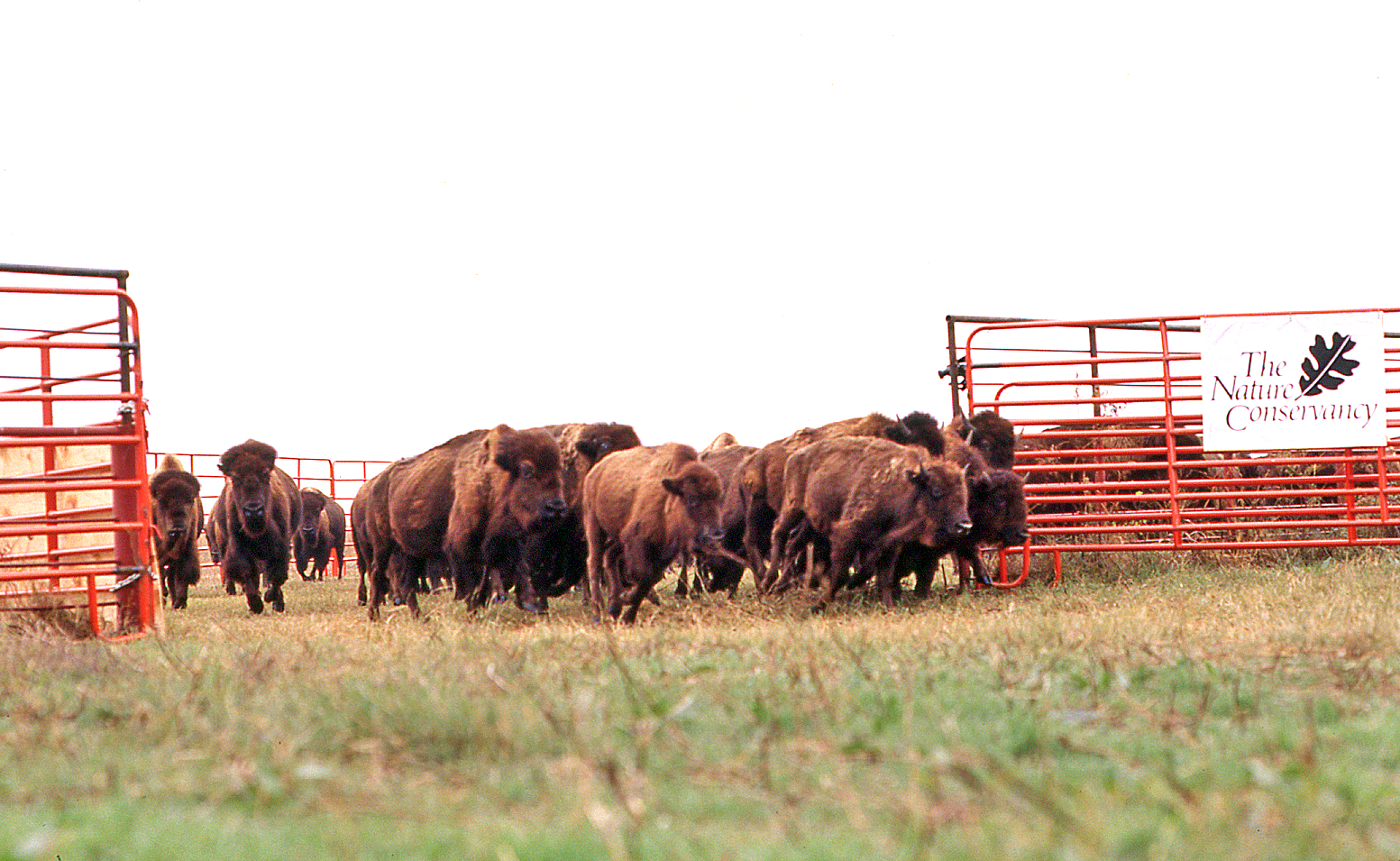
30 Years of Bison Restoration at Joseph H. Wiliams Tallgrass Prairie Preserve
Along with the breeze-bent grasses and colorful wildflowers, the tallgrass prairie of the rolling Flint Hills was dotted with bison, otherwise known as the American Buffalo, for millennia. These iconic animals continue to shape the evolution of the ecosystems that they inhabit and contribute to the health and wellness of people who live alongside them.
These titans are a keystone species—playing an integral role in the vulnerable tallgrass prairie ecosystem. Their grazing behavior and the effects they have on the prairie naturally promote biodiversity and help an array of wildflowers, plants, insects and amphibians flourish. In 1993 the Adams family donated 300 bison to the Joseph H. Williams Tallgrass Prairie Preserve, restoring balance and harmony to the land. Today, the herd consists of approximately 1,800 which freely roam over 29 square miles.
“At the time, I was the preserve manager,” recalls Bob Hamilton. “The day we released the bison was tremendous; not just for me, but for everyone who was there, the community, and everyone who has visited since. It’s humbling to see these animals back where they belong—on the open prairie. But we brought them here for a specific purpose. We can’t manage the preserve effectively without them. Along with prescribed fire, these animals are our number one conservation tool for this ecosystem.”
On the preserve, a bison’s primary job is to maintain the health of the prairie. As they roam, they pick up seeds in their fur—spreading them from field to field. When they wallow, the herd leaves behind hundreds of small craters, creating small pools in the rainy season where wildlife can find water. As they graze, an adult female will consume about 30 pounds of forage per day, creating space for new plants to grow.
“The release of the bison was a special day—for many reasons,” says Harvey Payne, community relations manager and former preserve director. “In fact, General Norman Schwarzkopf was the headlining speaker. I think back to his words, ‘We should rejoice in the knowledge that the great-grandchildren of these children here will experience what our great-grandparents experienced here. They’ll experience the tallgrass prairie.’ I think he’d be proud to see how the bison program has evolved.”
In addition to their conservation contributions, bison hold significant value to people—especially Native Americans whose relationship with the animal was severed during colonial settlement. Today, the InterTribal Buffalo Council (ITBC) is leading the effort to restore buffalo to Indigenous communities and their ancestral lands while revitalizing historical relationships.
“The significance of buffalo extends beyond their physical presence on the land,” said Troy Heinert, Sicangu Lakota, ITBC Executive Director. “They represent a positive force toward spiritual and cultural revitalization, ecological restoration and conservation, food sovereignty, health, economic development and much more as each buffalo is brought back home.”
Since 2020, more than 1,000 bison have made their way from TNC preserves to ITBC member Nations across the United States including 200 from the Joseph H. Williams Tallgrass Prairie Preserve.
“Our team is excited to support the return of buffalo to Indigenous communities,” says Mike Fuhr. “This restoration is about more than land. It is about connecting Indigenous People to their tribal identity.”
Renovations at Oka' Yanahli Preserve
2023 brought a major housing upgrade to Oka' Yanahli Preserve. Thanks to these renovations, essential staff and researchers will have safe, reliable lodging.
Burning by the Numbers
-
6,191
Acres Burned at Tallgrass Prairie Preserve
-
32,572
Partner Acres Burned Near Tallgrass Prairie Preserve
-
300
Acres Burned at Oka’ Yanahli Preserve
-
1,100
Partner Acres Burned Near Four Canyon Preserve
-
2,321
Acres Burned at J.T. Nickel Preserve
-
176
Partner Acres Burned near J.T. Nickel Preserve

Burning Better Together with The Cheyenne & Arapaho Tribes
Fire is a strong, enchanting element which deserves respect. It brings people together around campfires, turns bland food into exciting meals, its warmth brings comfort and it is an essential tool for conservation. When used correctly, prescribed fire invigorates plant life, enriches soil health, encourages biodiversity and helps fight climate change.
The Cheyenne and Arapaho Tribes and The Nature Conservancy share a vision of restoring and stewarding land using prescribed fire. On April 11, 2023, a team of 12 people, including 3 people from the Tribes, burned 2,397 acres at TNC’s J.T. Nickel Family Nature & Wildlife Preserve, the single largest burn at the preserve in over a decade.
“It’s simple to introduce a flame to the earth,” says Jeremy Tubbs, preserve director. “However, conducting a safe and effective controlled burn takes considerable time, money and coordination. We’ve been planning this burn for two years with the Cheyenne and Arapaho Fire Management and Prevention team; waiting on the weather to cooperate. I was eager to burn and am proud to say that together we executed a burn over double the size of our average burns. We simply wouldn’t have been able to do this by ourselves. This success is a shining example of how strong partnerships deliver significant results. It’s always a pleasure to work with this crew—and I never doubt what we can accomplish together.”
Phillip Daw, acting fire management officer and burn boss for the Tribes’ fire management program says that prescribed fire not only improves ecosystems, but it keeps people safe. “We’re always trying to help any way we can. Our crew helps our tribal members when we burn our land in western Oklahoma—removing accumulated organic matter and reducing the likelihood and severity of destructive wildfires. We also offer our services to organizations like TNC. Burning more acres through prescribed fire benefits everyone.”
After each burn, everyone comes together to share in a moment of celebration and reflect on the shared accomplishment. In moments like these, relationships develop and the partnership grows stronger. Together, TNC and the Tribes serve as a beacon of conservation and collaboration for the benefit of Oklahomans.
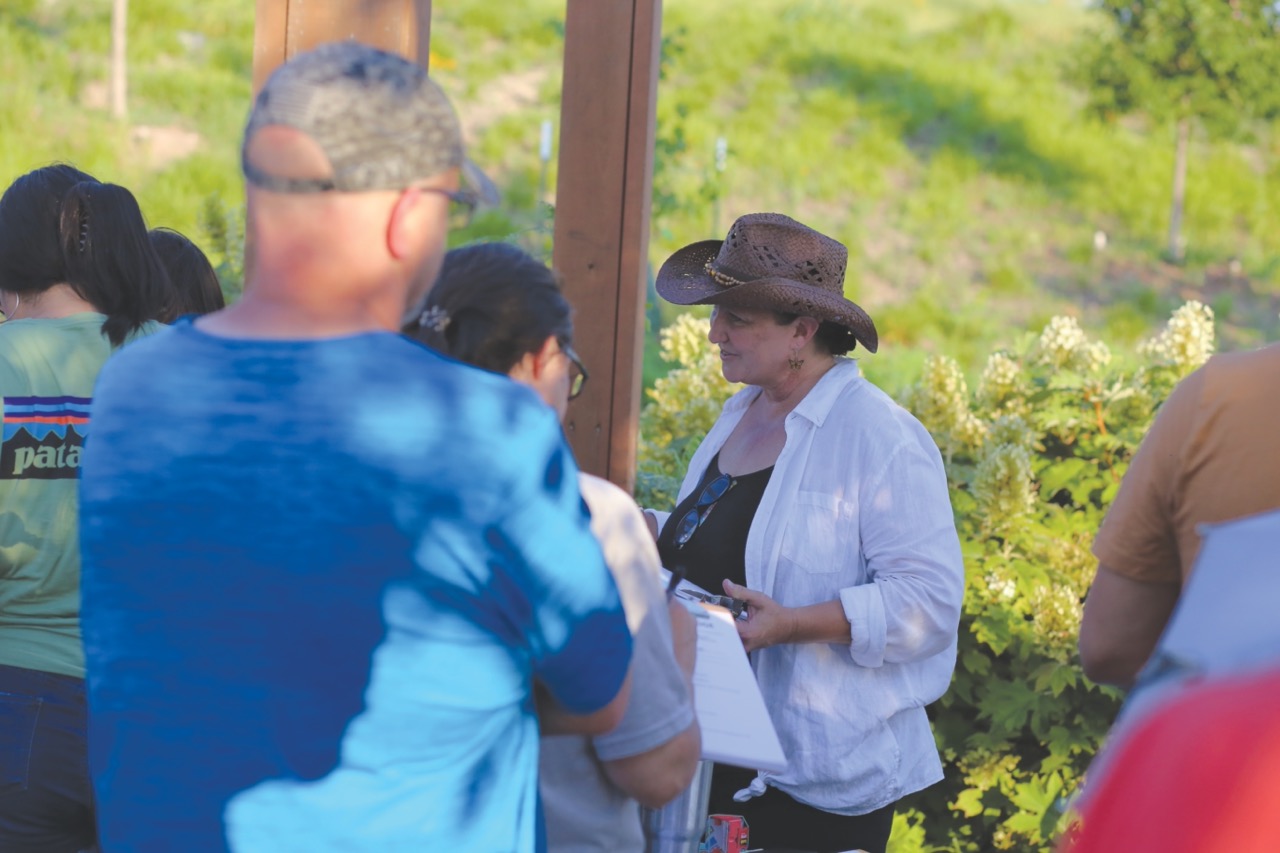
Pollinator Outreach
“As the immediate impacts of climate change increase drought in Oklahoma, the ways in which we support pollinators become more complex. Sometimes that means I invent games to teach children how monarchs need nectar to successfully migrate to Mexico. Other times it means encouraging master gardeners to implement functional gardens that are not only beautiful but are full of native plants—requiring less care and supporting wildlife. Sometimes it means working with local news crews or a big-budget monarch documentary. No matter the audience I help people think more deeply about the impact of their decisions in outdoor spaces.”
- Stephanie Jordan, Pollinator Outreach Coordinator
The summer kicked off in partnership with Commonwealth Urban Farms with a kid-focused bug festival. Teaching kids to marvel at insects—even the spooky ones—and understanding the relationships between plants and insects lays the groundwork for future environmental stewardship and encourages empathy. I brought an observation hive where visitors could watch, listen and learn about the activities of honeybees and their queen. The children played an interactive migration game—dressing up as monarchs and collecting enough symbolic nectar to complete their migration to Mexico.
As the monarchs came through Oklahoma during the fall migration, we were busy at different festivals and events. This is a crucial time, as people are energized by monarch activity. We handed out hundreds upon hundreds of seed packs, stressing the importance of biodiversity on large and small scales—providing larval host plants and nectar for monarchs and other pollinators. We also gave away guides that help people understand which nectar-providing plants are best suited for their region at reputable vendors. Our annual Pollinator Festival at Scissortail Park was a big crowd-pleaser. There were myriad opportunities for education and inspiration, expanding efforts to support pollinators. The event concluded with an evening bike ride symbolizing the migration.
Thanks to a highly motivated team of volunteers, two residential lots in the heart of OKC are being converted into a thriving pollinator park. The space serves as a micro-preserve for local residents—both human and wild—to escape the concrete and crabgrass and immerse in nature. It’s also a space schools use for outdoor classroom activities. I was also able to host a science class from ASTEC Charter School which had just completed a unit on prairie ecology at this site. They helped seed the prairie restoration area and collected data for future projects.
Download
Download the full report to see conservation successes from the past year.
DOWNLOAD Support Our Work